Our Victorian 4-wheeled carriages were built between 1864 and 1896. This type of vehicle was in regular use on the Isle of Wight until the 1930s when they were replaced by newer bogie carriages.
The old carriages were sold to become beach huts, farm stores and animal shelters. The Isle of Wight Steam Railway has since rescued many of these disused bodies and restored them for use on the line. These carriages usually operate with our Push-Pull Set, and sometimes with our Oldbury carriage.
2343 – LBSCR 5-COMPARTMENT THIRD
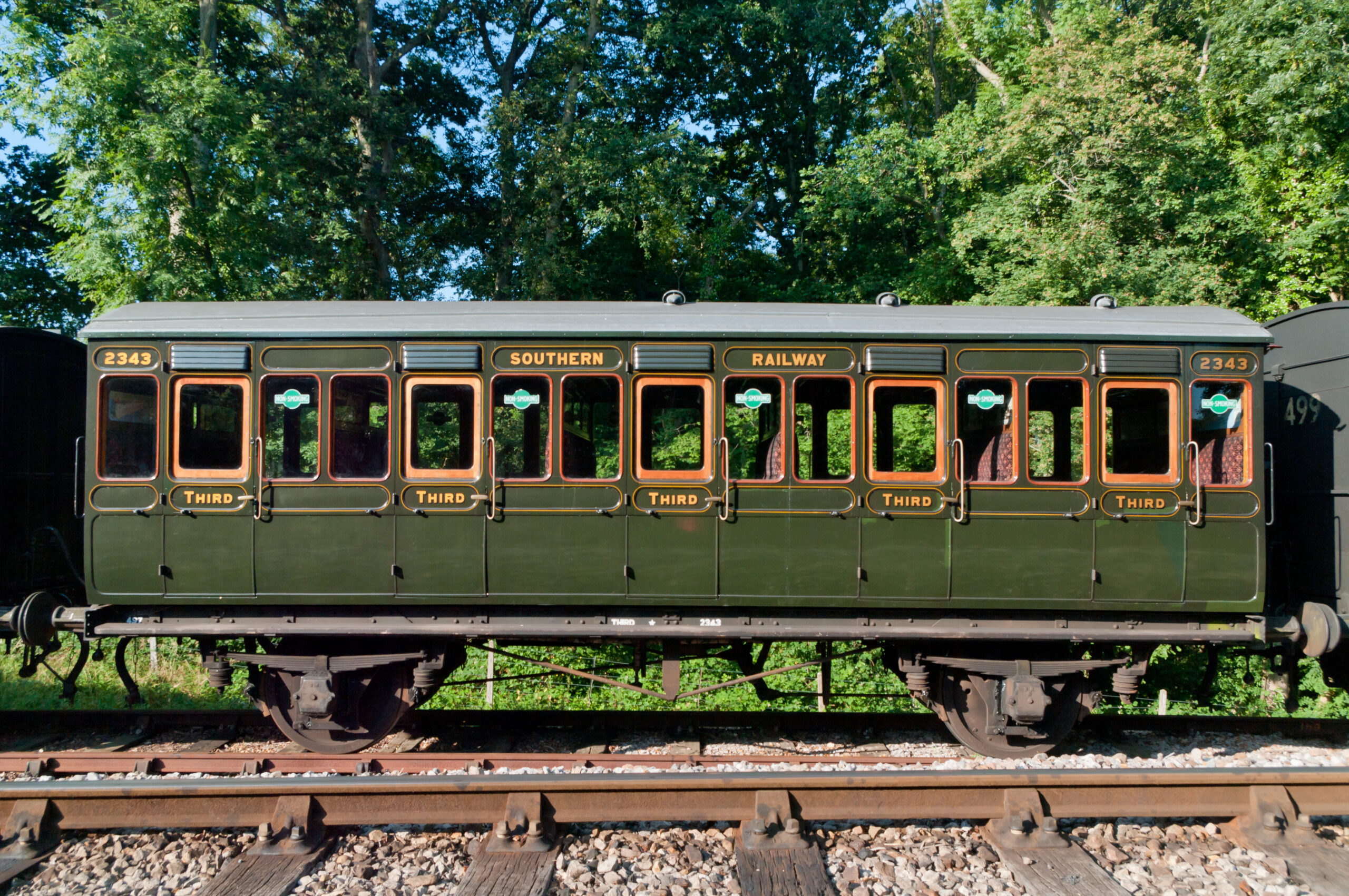
One of a series of nine Second Class carriages designed by Robert Billinton, built in 1896. On transfer to the Island in 1925, 2343 saw service as part of the 4 car Set 497.
Withdrawal in 1931 followed the arrival on the Island of more modern bogie coaches, the body was then sold and became a bungalow at Gurnard Marsh. 2343 was donated to the Isle of Wight Steam Railway, arriving at Havenstreet on 20th July 1984.
Restoration started in 1993 and completed in 1997.
6336 NLR 4-COMPARTMENT COMPOSITE
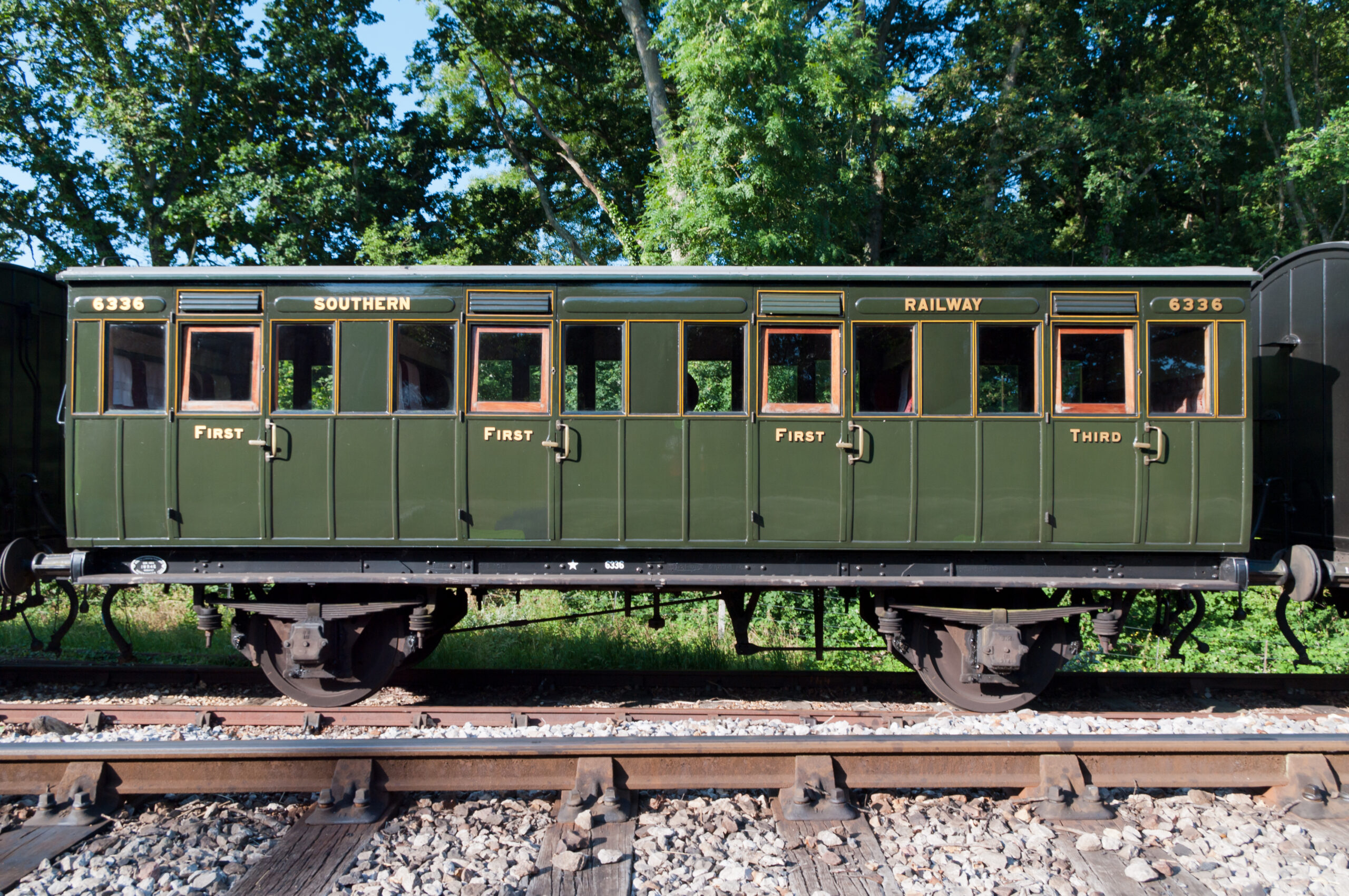
In December 1897 the Isle of Wight Railway purchased seven coaches from the North London Railway, among them was number 46. Originally a four compartment First Class carriage, one compartment was downgraded to Second Class by the IWR. After transfer of ownership to the Southern Railway 46 withdrawal took place on 27th February 1926.
In 1975 the body of 46 was rediscovered, built into a bungalow on Hayling Island. The owners generously donated the body to the Isle of Wight Steam Railway and it returned to the Island. 46 was the first grounded body to be restored to passenger service by the Railway, being mounted on the underframe of a Southern Railway parcels van.
Following return to service in 1986 46 was entered in the Association of Railway Preservation Society’s Best Preserved Carriage competition and, to the gratification of the small team who had carried out the work, was awarded first prize. When first restored the coach carried the varnished teak livery of the Isle of Wight Railway it has since been repainted in Southern Railway lined olive green carrying the number 6336.
2515 LCDR 5-COMPARTMENT THIRD
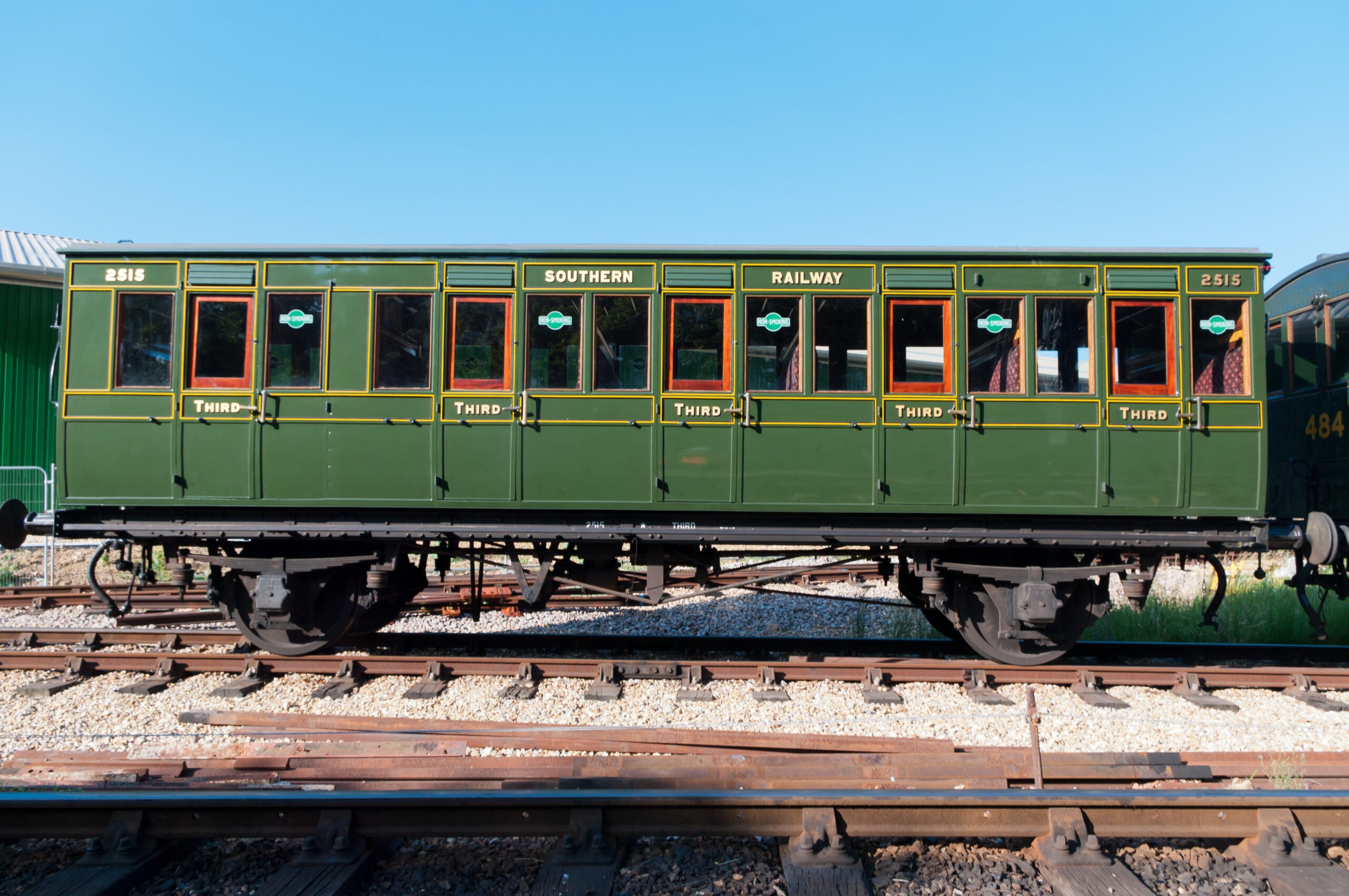
This coach began life as a six wheel 4-Compartment Brake Second, being downgraded to Brake Third about 1899. In 1916 the centre pair of wheels was removed and 1924 the Guards observatories (duckets) were removed. In 1929 it was selected for transfer to the Island and the Guard/Luggage area was converted into an additional Third Class compartment. Withdrawal took place in May 1937 and the body became a chalet at Brambles Chine, Colwell.
Following rescue by the Wight Locomotive Society it was moved to Havenstreet in 1981, with restoration completed in 2002. Part of the restoration process involved the creation of a wheelchair compartment, although the exterior appearance of the vehicle remains unchanged. The restored LCDR 2515 was the overall winner of the 2002 Heritage Railways Association Carriage and Wagon competition.
6378 LCDR 4-COMPARTMENT COMPOSITE
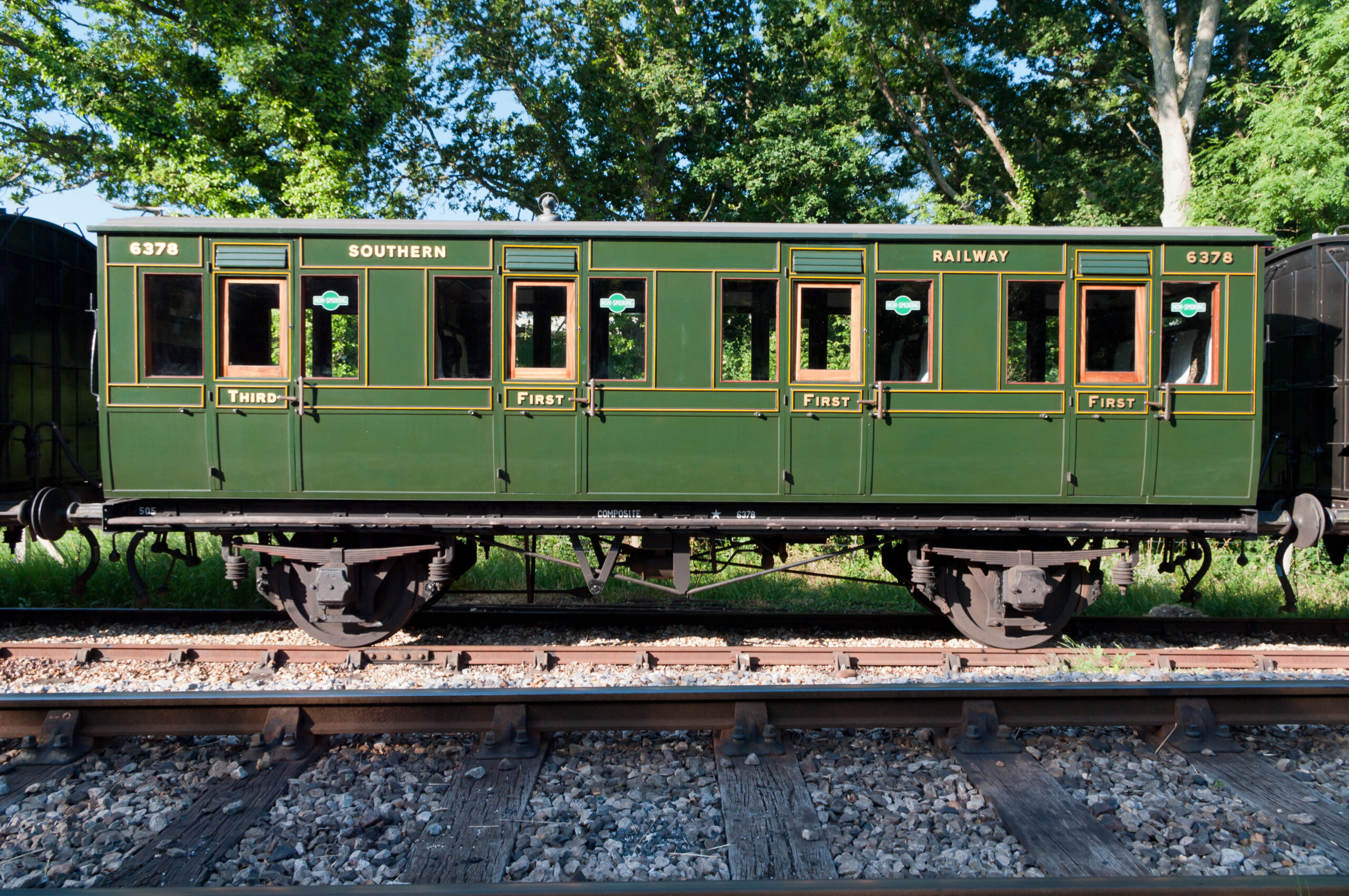
This was one of a series of First Class carriages built in 1886 by the London Chatham and Dover Railway for boat train service. It originally ran on six wheels, the center pair being removed in 1920. No date has been confirmed when one compartment was downgraded from first to third Class, but 1927 seems likely when selected for transfer to the Isle of Wight.
In the event it was 1930 before it was transferred as part of Set 505. Withdrawal took place in 1937 when it became a garden chalet at Rookley Green from whence it was rescued in 1984. 6378 entered the C&W Workshop for restoration in 2004 and entered passenger service during the spring of 2009.
LBSCR 3-COMPARTMENT BRAKE THIRD 4115
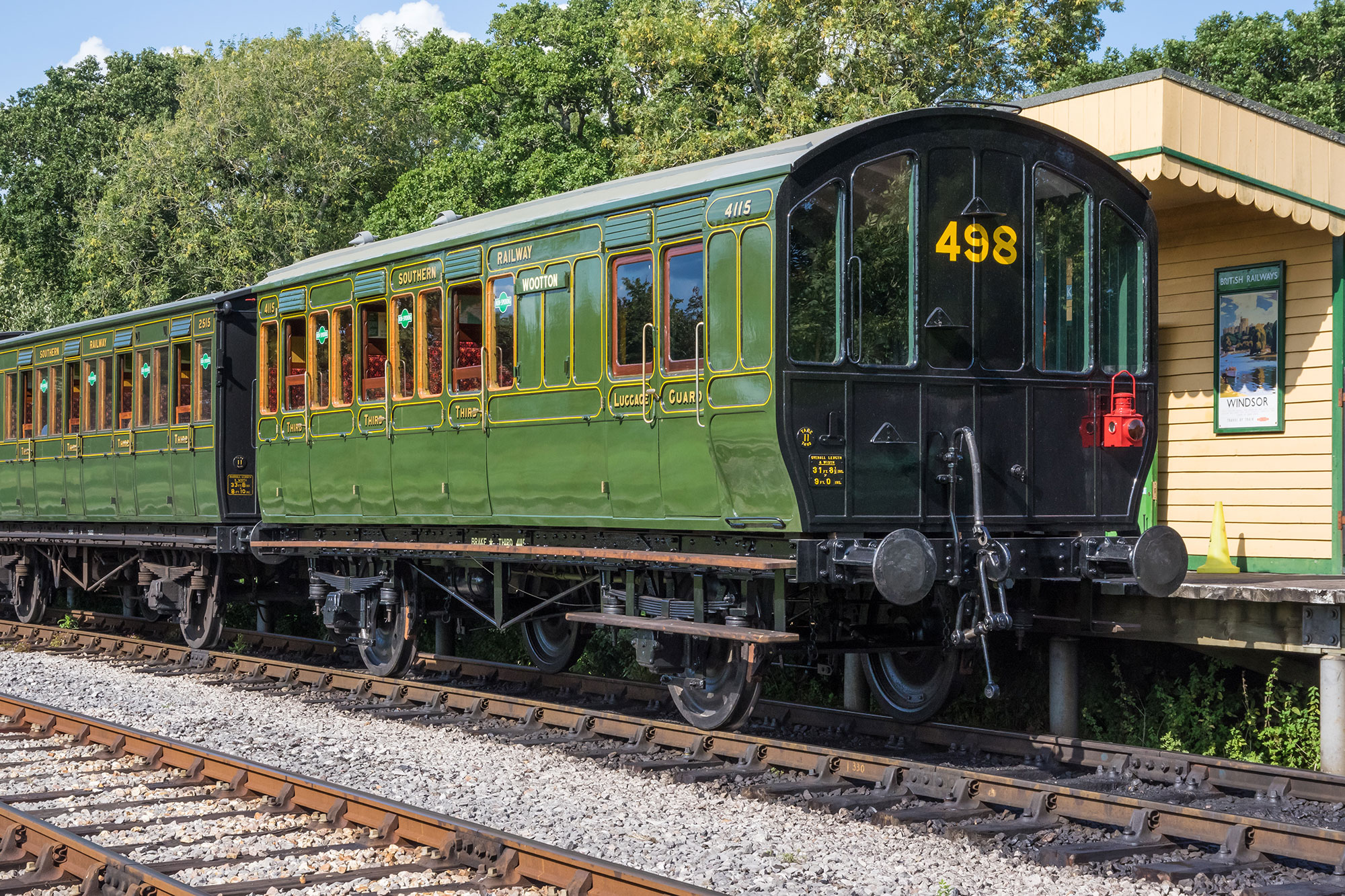
In the half year to December 1896, the LBSCR turned out a batch of Billinton-designed four-wheelers. LBSCR no 1200 was transferred to the IOW on 27 June 1925. The coach was formed into set 498 as a three compartment brake third and allocated the number 4115. It says something of the state of the island’s coach stock at the time that it was thought worthwhile shipping a near life expired vehicle across the Solent. 4115 soldiered on until October 1931, whereupon it was sold out of service and moved to Rew Steet, Gurnard and used as a bungalow. The coach was rescued for preservation and moved to Havenstreet in 2005. Restoration to passenger carrying condition commenced in 2013, and was completed in 2018
Video
Join Train Story lead guide, Roger Fruen, on a tour of our four-wheeled carriages